Characteristics
Production
Preservation
Spoilage
|
Humeid and Tukan described the method of Nabulsi
cheese production (1986) and Humeid et al. (1990)
and can be described as follows: 1- sheep’s milk is warmed to
about 35C and coagulated by rennet for 40-60 minutes
until a curd is formed .
2- The curd is then
strained in cheese cloth and the resulting solid residue
is pressed for up to two hours.
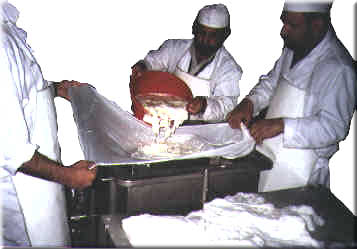 |
Addition
of curd to cheese cloth |
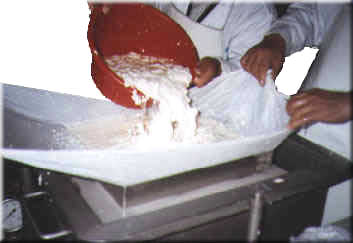
|
Addition
of curd in cheese cloth |
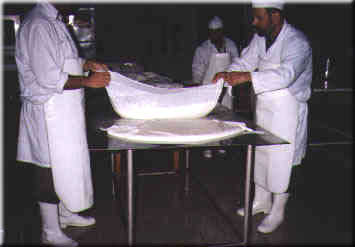
|
The
filled cheese clothe are placed on flat surface
for 5 to 8 minutes, to allow whey drainage from
the curd. |
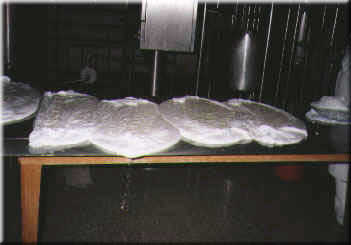
|
The
filled cheese clothe are placed on flat surface
for 5 to 8 minutes, to allow whey drainage from
the curd.
|
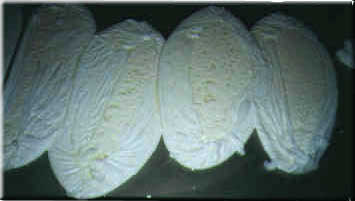
|
An
enlarged figure show the curd in cheese cloth
before pressing, this step can be considered as
whey preremoval step.
|
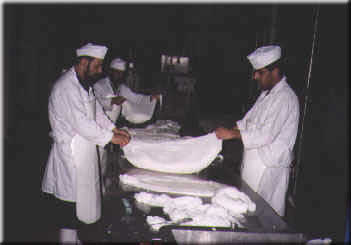
|
The
transfer of filled cheese cloth after the
drainage of whey to the pressing step
|
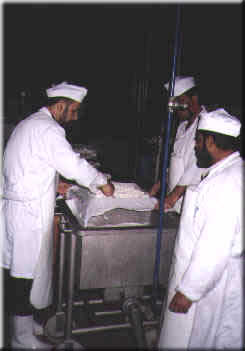
|
Spreading
of curd in cheese pressing mold, this step
require spreading of curd to all corners of the
mold. Improper spreading of the cheese can damage
the cheese pieces shape.
|
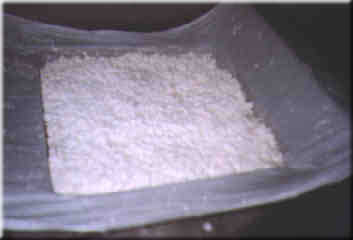
|
The
curd in cheese cloth after spreading it in the
mold before pressing.
|
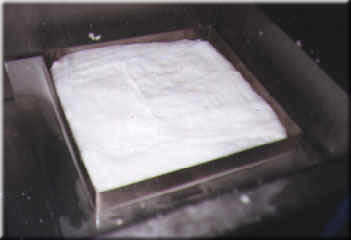
|
This
image show the folded cheese cloth in the mold.
After this step the curd is now ready for
pressing -step
|
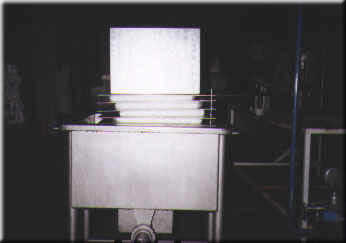
|
The
pressing of cheese, this step can be done by
putting folded cheese cloth between stainless
steal in layers and putting suitable weight on
the cheese.
|
3- The
pressed cheese is then cut into small rectangular blocks
with dimensions of (8x4x2 cm). These pieces are sprinkled
with salt for further whey drainage and is then boiled.
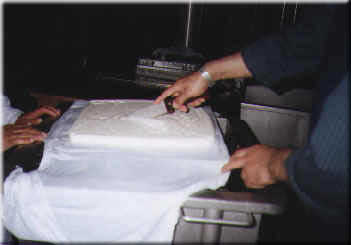
|
Cutting
of pressed cheese
|
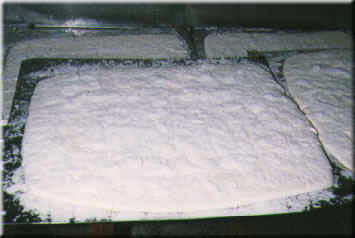
|
The
sprinkling of salt on the cheese for further
removal of whey from cheese. This step take from
one to two dayes. The fast diffusion of salt into
the cheese and further removal of whey - which
mean that the moisture content of the cheese are
decreased- can prevent the spoilage of cheese
during this period. |
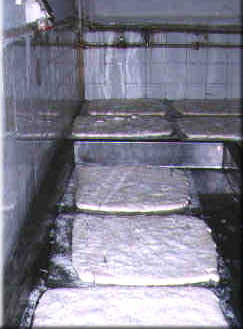
|
Another
picture showing the sprinkling of salt on cheese
after pressing step.
|
4-
Boiling is done by dipping cheese pieces in boiling brine
( not less than 15% w/v salt ) and heating at boiling
temperature until pieces soft and float on the surface of
the brine. This process usually requires about 5-15min.
5- The pieces are then
taken out of the brine, placed over a flat surface,
reshaped by slight pressing, then left to cool.
6-The cheese is then
stored, with the brine in which it was boiled using 10-20
Liter cans, usually without refrigeration.
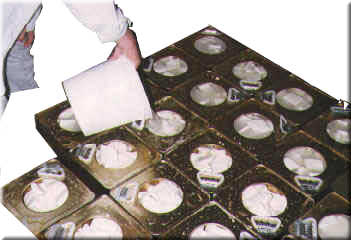
|
Filling
of cheese in cans, and addition of the brine to
cans. |
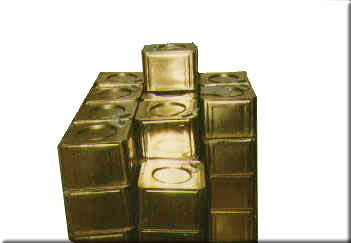
|
This
image show the final product, the product are
storable for one year without refrigeration. |
References
- Humeid, M. Tukan, S.
1986. Toward the Development of the Traditional Method of
White Boiled "Nabulsi" cheese Production,
Dirasat.13 (5):19-29.
- Humeid, M. A., Tukan,
K. and Yammani, M. I. 1990. In Bag Steaming of White
Brined Cheese as a Method for preservation.
Milchwissenschasft. 45: 513-516.
|

